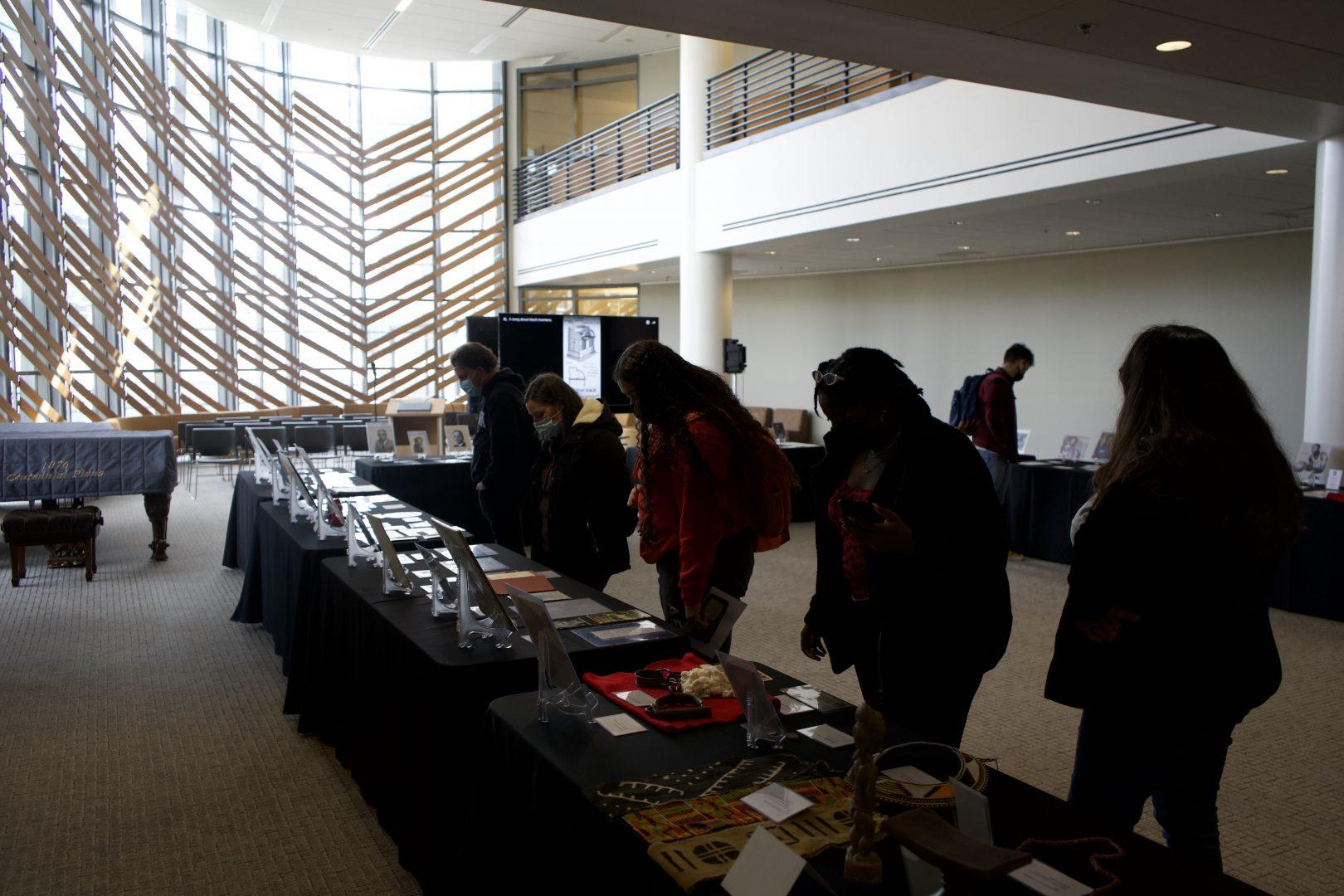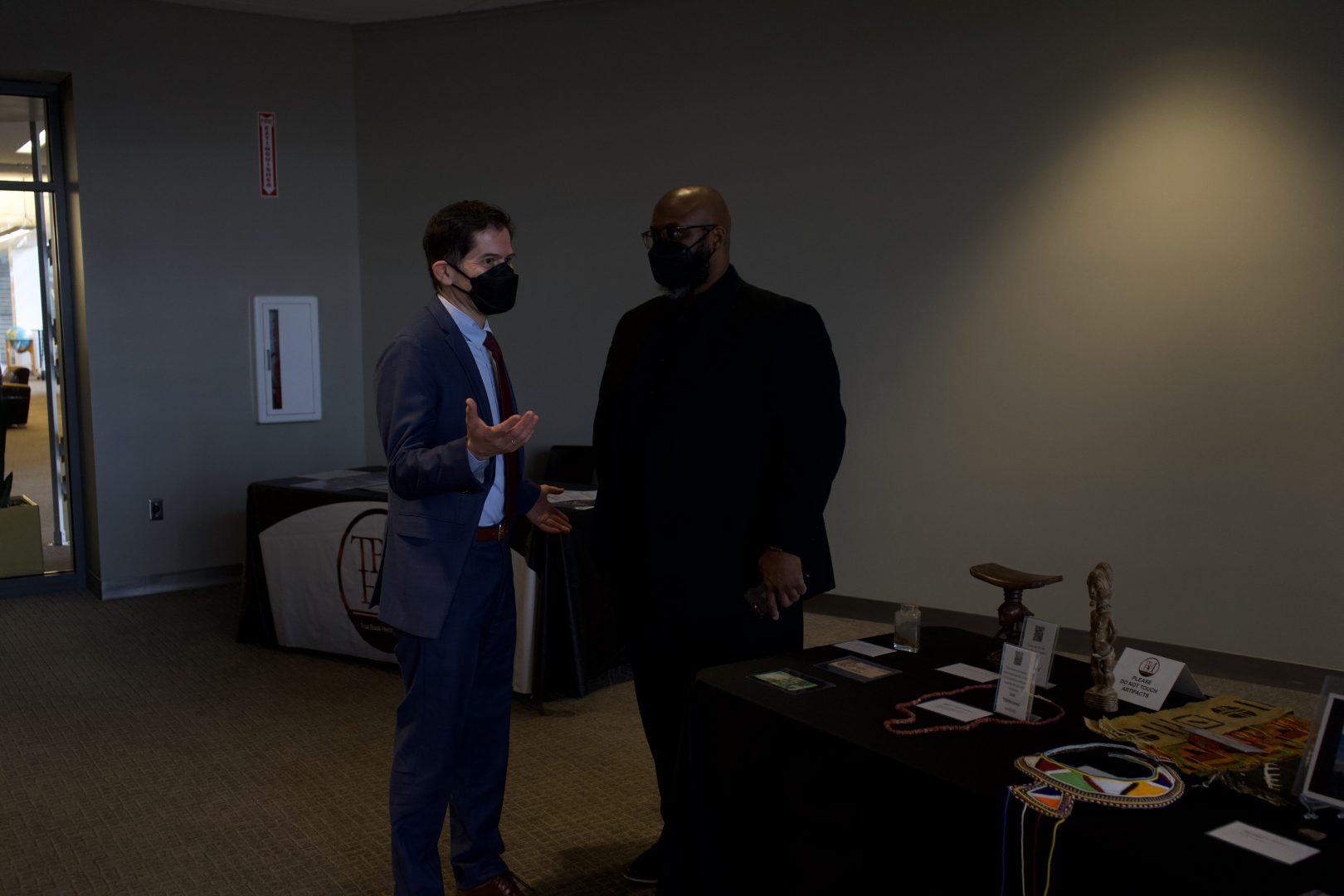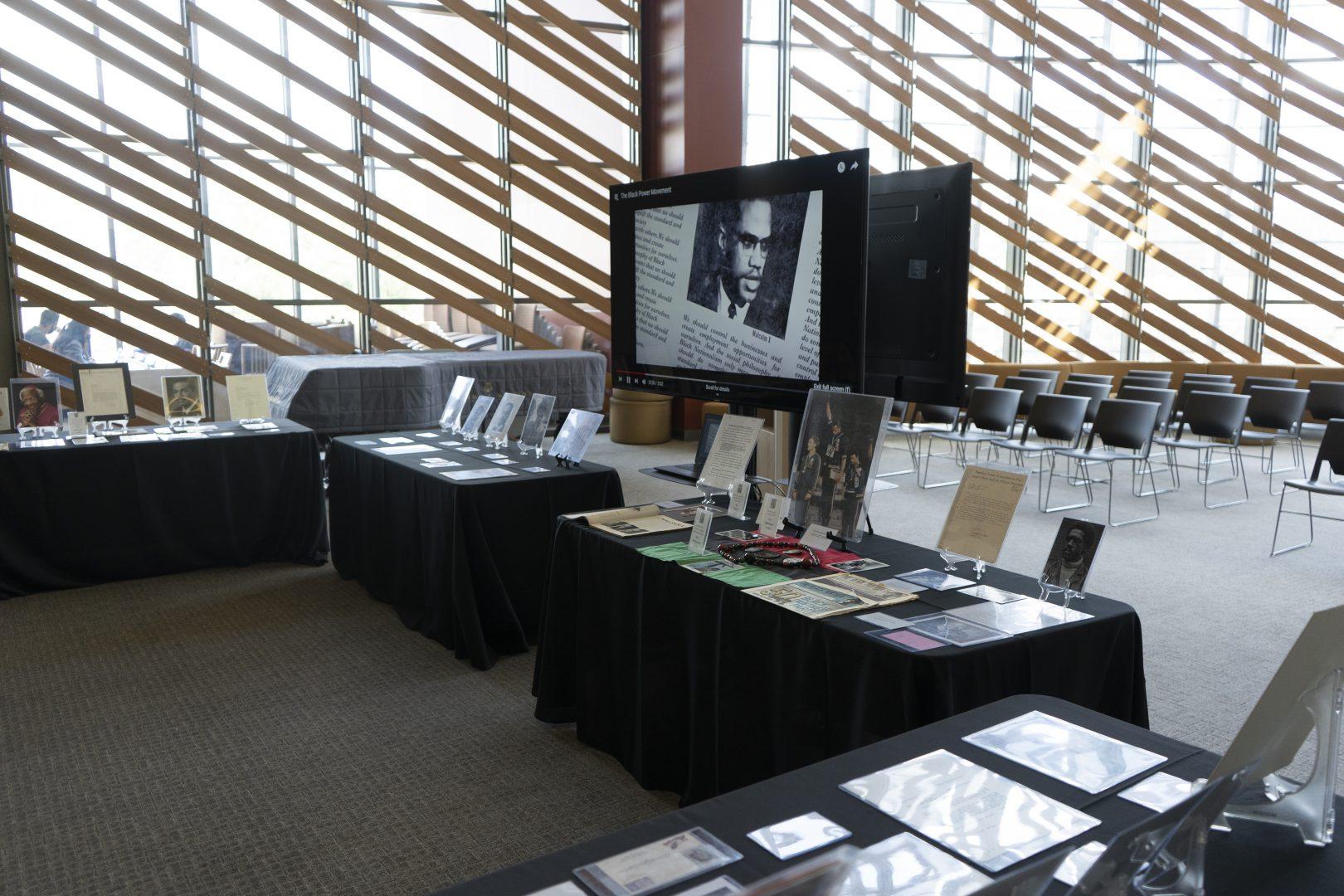The True Black History Museum brought its traveling exhibition of rare and authentic artifacts to Fresno State for students and the community to visit on Wednesday, Feb. 23.
The museum has artifacts dating from the late 1700s to the 21st century displayed in chronological order. The goal of the museum is to preserve the history of African Americans and educate others about the contributions of African Americans throughout history through a traveling Black history experience.
It was set up in the Leon S. Peters Ellipse Gallery on the second floor of the university library, where visitors had the opportunity to learn about significant contributions from African Americans in politics, art, sports, education and science.
Some of the artifacts featured in the exhibit included a signed photograph of Shirley Chisholm, the first African American to run for a major party’s nomination for president of the United States as well as the first African American woman to run for the Democratic Party’s presidential nomination, plus a signed letter from Barbara C. Jordan, who was the first African American woman elected to the Texas senate after Reconstruction.

Fred J. Saffold III, founder of the museum, spoke of the importance of selecting artifacts for display. He called the exhibit that had come together from those choices “a tribute to the African American journey.”
“[African Americans] have a history that predates 1619, and our history is not rooted in savagery, but in loyalty and accomplishment,” Saffold said.
He said there were two reasons the museum was founded: to preserve the history of Black people, and to educate others about the value of African Americans and their history.
“People just have no idea of the journey that African Americans have gone through. They have no idea of how important the contributions that Black people have made, how important they are to this country’s success,” Saffold said.
Marisa Williams, student coordinator for the African American Programs and Services (AAPS), said that the collaborative effort between AAPS and the University Student Union (USU) Productions team allowed for a “a space for people to get talking about the pivotal moments in history that were started by African Americans.”
William pointed out that this was the first time the museum had visited Fresno State’s campus, which she said could highlight aspects of Black history many may not know about.
“I think it was really powerful. Just the chronological [display] of Black history in general, like, I think it’s really powerful, and I actually learned a couple of things in there that I didn’t know before,” said Christan Cui, a junior majoring in political science.
President Saúl Jiménez-Sandoval, who also visited the exhibit, acknowledged the opportunity for students to learn from the traveling exhibition.
“I would have liked to have this museum stay here for longer, because I think we could have reached out to more students. But I would like them to see how our history is a very complicated history. It’s a very painful history, and we need to embrace that history in order to move forward together as a multicultural society,” Jiménez-Sandoval said.

Maribel Flores, a senior majoring in public health, said the museum personally impacted her when she saw the artifacts related to athleticism and famous athletes on display in the exhibit.
“Muhammad Ali really made an impact on his sport and was able to put his race out there,” Flores said.
Flores added that visiting the museum was a good learning experience and encouraged other students to take advantage of future events such as this to inform themselves more.




